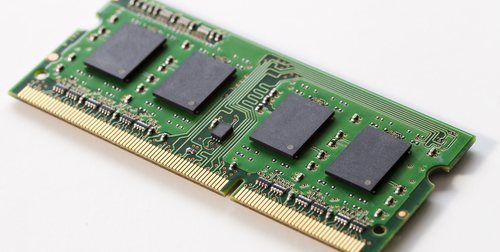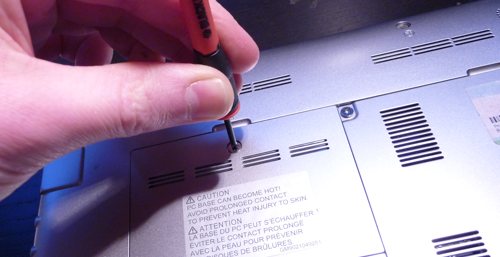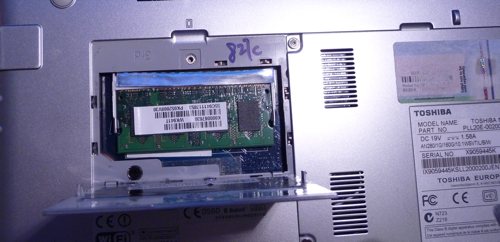IT for Donuts: how to upgrade laptop memory
IT for Donuts: how to upgrade laptop memory

IT for Donuts is our regular Friday feature where we explain a tech term or answer a question about business IT.
This week: it's often said that upgrading your laptop's memory is a good way to make it run faster and last longer. But how do you do this?
Why upgrade laptop memory?
Your laptop's memory (random access memory, or RAM for short) is used to store information about the programs you're using.
If your laptop sometimes runs slowly, it could well be because the RAM is full of data. This means your computer has to work much harder to shift information around.
Upgrading your RAM is almost always the most cost-effective way to improve your computer's performance. With most laptops, it's also straightforward. Here's how...
Find the right memory
The first thing you need to do is buy some new RAM for your laptop.
Different laptops take different types of memory. As long as you have the make and model of your laptop to hand, you can use these tools from RAM manufacturers Crucial and Kingston to find the right stuff for your computer.
You also need to decide how much memory you're going to buy. Your laptop will probably have between 1GB and 4GB of RAM already. When you upgrade, aim for a minimum of 4GB. For the cost, it's usually best to upgrade to 8GB or 16GB though.
A good rule is to get as much RAM as you can afford. I recently upgraded my laptop from 4GB to 16GB. The RAM cost around £120, but the performance difference is astonishing.
Install your RAM
Once you've got your hands on some RAM, you need to install it into your laptop. For this, you'll need a flat surface to work on and a small screwdriver.
It's also a good idea to wear an anti-static wristband. This protects your computer's components from static electricity. If you don't have one, touch a bare piece of metal that's earthed (like a radiator pipe) before you start.
Now, don't panic, but we're going to open up your laptop:
1. Open up your laptop
To get started, shut your laptop down (don't just put it to sleep) and turn it over.
Depending on your laptop, you'll have to either remove the entire base, or remove a cover that provides access to the memory.
There may be markings on the laptop to help you. This Toshiba model has a small computer chip symbol next to the RAM cover:
![]()
Remove the screw(s) securing the cover.
If there's more than one, take note of which goes where, as they may be different lengths.

2. Find the RAM
Lift off the cover or remove the base of your laptop.
Identify where the memory chips are in your computer. You're looking for one of more circuit boards that look like this (scroll up to the top of this post for a really good photo):

3. Remove existing laptop memory
Depending on your laptop model, there may be one or more slots for the RAM. Often they're beside each other, but sometimes they're on top of one another.
If — like this model — there's only one slot, you need to remove the existing RAM. If not, then you may be able to install your new memory into the spare slot.
To remove the existing RAM, look for metal clips at the side of the memory module. Push them outwards, then remove the RAM as in this video:
(Hold the RAM module at the edges. Don't touch the metal contacts at the bottom.)
4. Install new memory
That's the hardest bit over.
To install your new RAM, just do what you just did in reverse. If you have more than one memory module to install, just do the same for each:
5. Test your upgraded laptop memory
Pop the cover back on, do up the screws and then boot up your computer.
Finally, it's worth taking a few minutes to make sure your new RAM is working properly. You can do this using software that writes and reads data to and from the new RAM, checking it for accuracy.
Windows has a built-in memory testing tool. If you use a Mac, download and run Rember for free.
Important notes:
- Upgrading the RAM in most laptops will not void the manufacturer's warranty. However, always check before attempting a laptop memory upgrade.
- Although upgrading laptop memory is usually straightforward, you follow these instructions at your own risk. If anything goes wrong, we can't be held responsible.




Comments
Add a comment